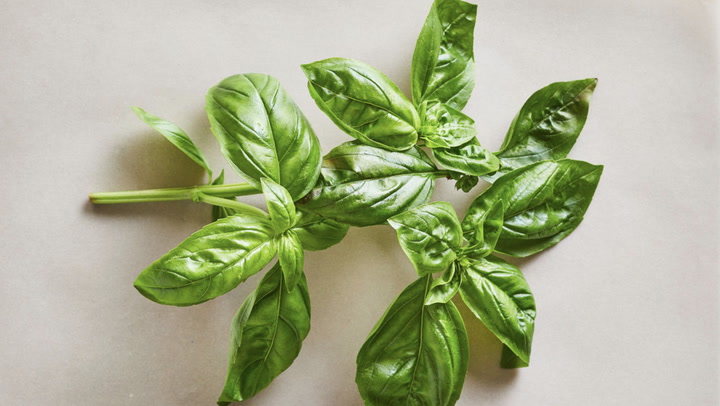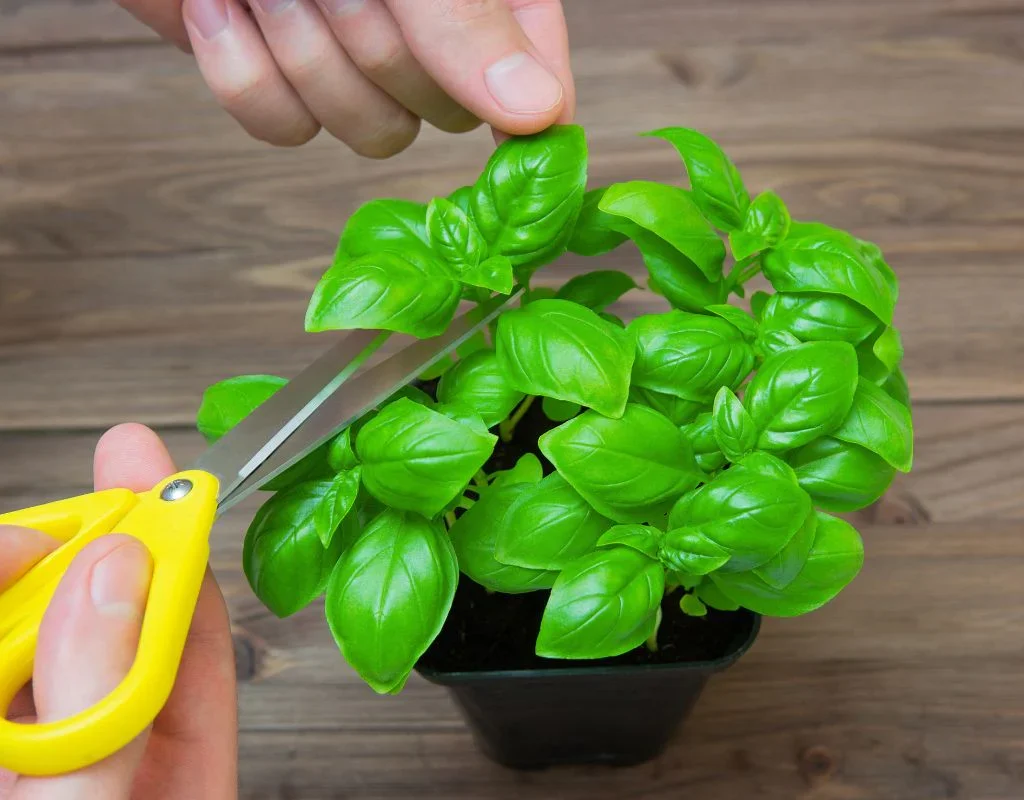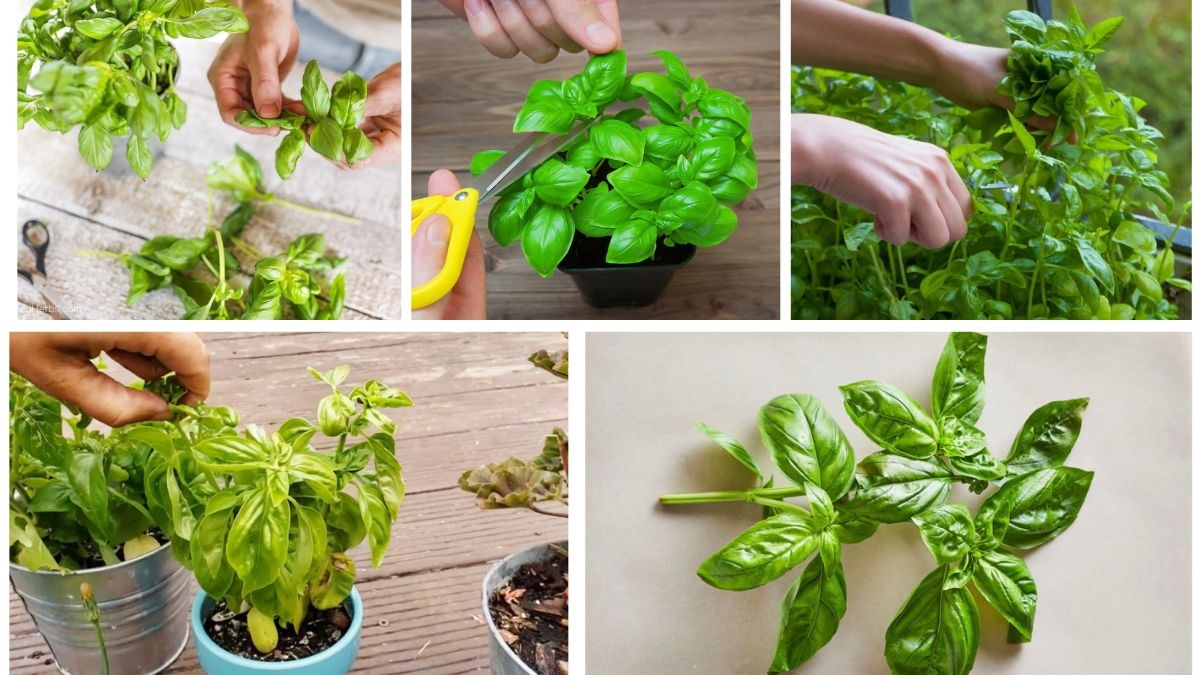Basil is one of the most beloved herbs in the culinary world, cherished for its rich aroma and distinct flavor. Whether sprinkled over pizza, blended into pesto, or added to a refreshing salad, basil elevates dishes with its vibrant taste. But here’s something every gardener and home cook should know: the way you cut basil directly impacts its flavor, yield, and longevity. Many people mistakenly pluck leaves at random, which can weaken the plant and reduce future harvests.
In this guide, we’ll cover everything you need to know about how to cut basil plants correctly for a continuous supply of fresh, flavorful leaves. From the best tools to use, the right time to cut, and how to encourage bushy growth, this complete guide will ensure your basil plant thrives all season long.
Why Cutting Basil Properly Matters

Pruning or cutting basil is more than just about harvesting leaves for your recipes—it’s about caring for the plant. Proper cutting:
- Encourages bushier growth: Instead of growing tall and leggy, basil will produce more side shoots.
- Extends the plant’s lifespan: Cutting prevents early flowering (bolting), which often makes leaves taste bitter.
- Improves flavor: Regular pruning helps basil leaves stay tender, aromatic, and packed with essential oils.
- Increases yield: With proper cutting, one basil plant can provide dozens of harvests in a single season.
When done right, you’ll enjoy a steady supply of basil leaves without harming the plant.
When Is the Best Time to Cut Basil?

Timing is crucial for cutting basil. Here are some guidelines to follow:
- Start Cutting at 6–8 Inches Tall
Wait until your basil plant reaches about 6 to 8 inches in height before cutting. At this stage, the plant is strong enough to handle pruning and recover quickly. - Morning Harvest
The best time to cut basil is early in the morning, just after the dew has dried. At this time, the leaves are at their freshest and richest in essential oils. - Before Flowering
Once basil starts producing flowers, the leaves become less flavorful. Always cut before the plant sets flowers. If flowers appear, snip them off immediately to redirect energy into leaf growth.
Tools You’ll Need

Cutting basil requires very little equipment, but having the right tools makes the job cleaner and healthier for the plant:
- Sharp scissors or pruning shears – These help make clean cuts without damaging stems.
- Clean hands – If you prefer to pinch basil with your fingers, wash your hands first to prevent spreading disease.
- Small bowl or basket – For collecting freshly cut basil leaves without bruising them.
Tip: Always sanitize scissors or shears before pruning to reduce the risk of infections.
Step-by-Step Guide: How to Cut Basil

Here’s a simple process to ensure you cut basil correctly for maximum yield:
Step 1: Identify the Right Spot
Look for a stem with a pair of leaves and a small set of tiny leaves (nodes) growing just above it. These nodes are where new growth will sprout once the stem above them is cut.
Step 2: Make the Cut
Use sharp scissors to cut the stem about a quarter-inch above the leaf nodes. This will encourage the plant to branch out, producing two new stems instead of one.
Step 3: Continue Regularly
Cut your basil plant regularly—every 1 to 2 weeks during the growing season. This prevents the plant from getting too tall and encourages bushier, more compact growth.
Step 4: Avoid Cutting Too Low
Never cut basil all the way down to the soil. Leave at least 3 to 4 inches of the plant intact so it can continue photosynthesizing and growing.
Tips for Keeping Basil Flavorful

- Pinch Flowers Immediately
As soon as you see flower buds, pinch them off. Flowering shifts the plant’s energy from leaf production to seed production, reducing flavor. - Harvest Leaves from the Top
Always cut from the top instead of plucking individual leaves from the bottom. This helps the plant remain strong and prevents it from getting leggy. - Don’t Over-Harvest
Never cut more than one-third of the plant at a time. Over-harvesting can shock the plant and stunt its growth. - Regular Cutting Is Key
Basil thrives when pruned often. A neglected plant will grow tall, woody, and produce fewer flavorful leaves.
How to Store Freshly Cut Basil
Once you’ve harvested your basil, proper storage is important to keep it fresh and flavorful:
- Short-Term Storage
- Place basil stems in a glass of water like a bouquet.
- Keep at room temperature; refrigeration can darken the leaves.
- Refrigeration
If you must refrigerate, wrap basil leaves loosely in a damp paper towel and store them in a perforated bag. - Freezing
For long-term use, chop basil leaves and freeze them in ice cube trays with olive oil or water. - Drying
While dried basil isn’t as flavorful as fresh, you can hang bundles upside down in a dark, airy room until crisp. Store in airtight jars.
Common Mistakes to Avoid
Even with the best intentions, beginners sometimes make mistakes when cutting basil. Here’s what to avoid:
- Plucking single leaves randomly – This weakens the plant and reduces growth.
- Cutting too low – Removing too much stem damages the plant.
- Letting the plant flower – This reduces leaf flavor and tenderness.
- Using dull scissors – This crushes stems and makes the plant prone to disease.
- Over-harvesting at once – Taking too many leaves shocks the plant.
Seasonal Basil Cutting and Care
- Spring and Early Summer – Focus on pruning regularly to shape the plant and promote bushiness.
- Mid-Summer – Harvest often, as this is basil’s peak growth season. Keep pinching flowers as they appear.
- Late Summer to Fall – Continue cutting, but start freezing or preserving basil before the weather cools, since basil is highly sensitive to frost.
Companion Tips for Thriving Basil Plants
To maximize your basil harvests, combine proper cutting techniques with good overall plant care:
- Sunlight: Basil loves full sun—at least 6–8 hours daily.
- Watering: Keep the soil moist but not waterlogged; water at the base to avoid wet leaves.
- Fertilizer: Use a balanced liquid fertilizer every 2–4 weeks for lush growth.
- Companion Planting: Basil grows well alongside tomatoes, peppers, and marigolds, which also help deter pests.
Conclusion
Learning how to cut basil correctly is a small skill that makes a big difference. With regular and proper cutting, you’ll not only enjoy a steady supply of basil leaves but also improve their flavor and extend your plant’s productivity. The key lies in cutting above leaf nodes, harvesting consistently, and preventing flowers from forming.
By combining these pruning techniques with proper care—sunlight, watering, and storage—you’ll be able to enjoy fresh, flavorful basil leaves all season long. Whether you’re crafting homemade pesto, topping your favorite dishes, or simply savoring the fragrance of this wonderful herb, your basil plant will reward you generously when treated right.






Leave A Comment